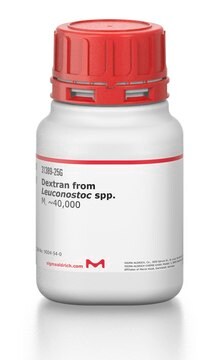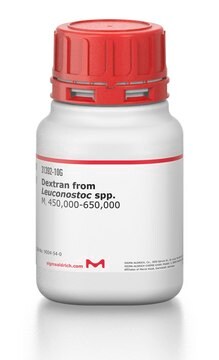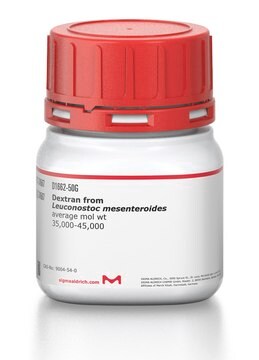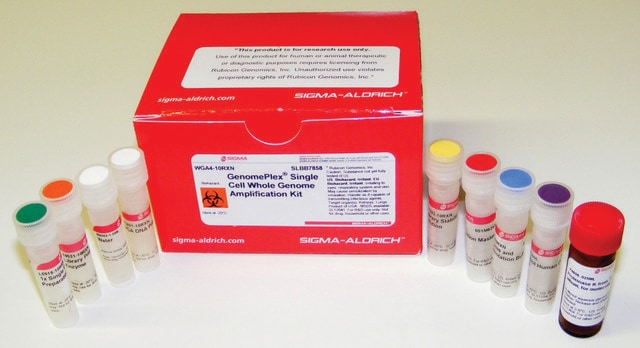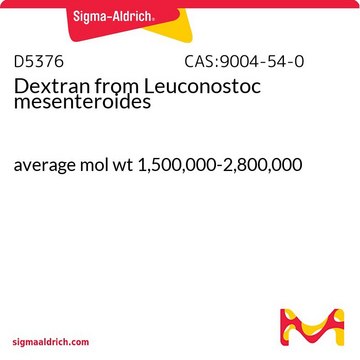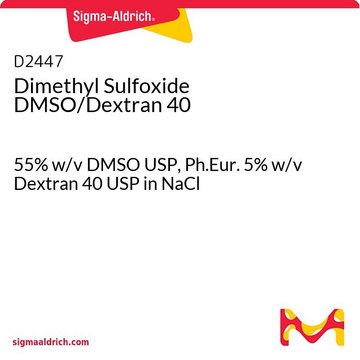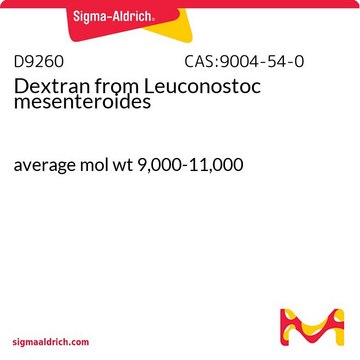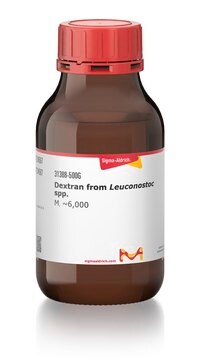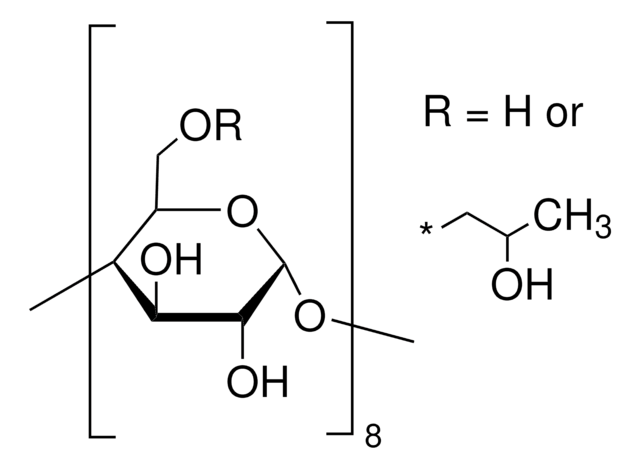D8802
Dextran solution from Leuconostoc mesenteroides
20 % (w/w) (Autoclaved)
Sinonimo/i:
repeating α-linked D-glucopyranosyl units, synthesized from sucrose by Leuconostoc mesenteroides
About This Item
Prodotti consigliati
Forma fisica
liquid
Livello qualitativo
PM
average mol wt ~500,000
Concentrazione
20 % (w/w) (Autoclaved)
tecniche
titration: suitable
Colore
colorless
Densità
1.00-1.20 g/mL
applicazioni
hematology
histology
Temperatura di conservazione
2-8°C
InChI
1S/C18H32O16/c19-1-5(21)9(23)10(24)6(22)3-31-17-16(30)14(28)12(26)8(34-17)4-32-18-15(29)13(27)11(25)7(2-20)33-18/h1,5-18,20-30H,2-4H2
FZWBNHMXJMCXLU-UHFFFAOYSA-N
Descrizione generale
Applicazioni
Codice della classe di stoccaggio
10 - Combustible liquids
Classe di pericolosità dell'acqua (WGK)
WGK 2
Punto d’infiammabilità (°F)
Not applicable
Punto d’infiammabilità (°C)
Not applicable
Scegli una delle versioni più recenti:
Possiedi già questo prodotto?
I documenti relativi ai prodotti acquistati recentemente sono disponibili nell’Archivio dei documenti.
I clienti hanno visto anche
Il team dei nostri ricercatori vanta grande esperienza in tutte le aree della ricerca quali Life Science, scienza dei materiali, sintesi chimica, cromatografia, discipline analitiche, ecc..
Contatta l'Assistenza Tecnica.